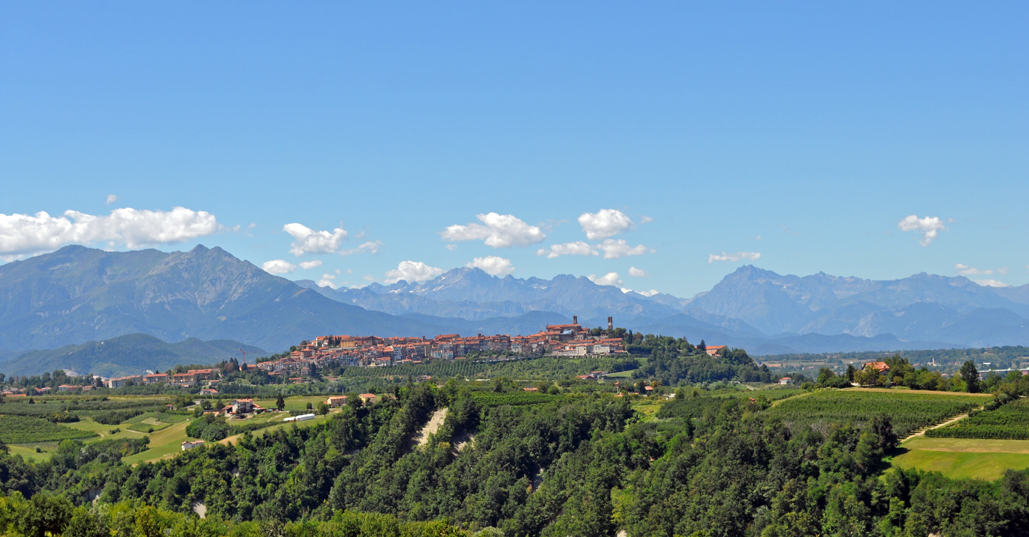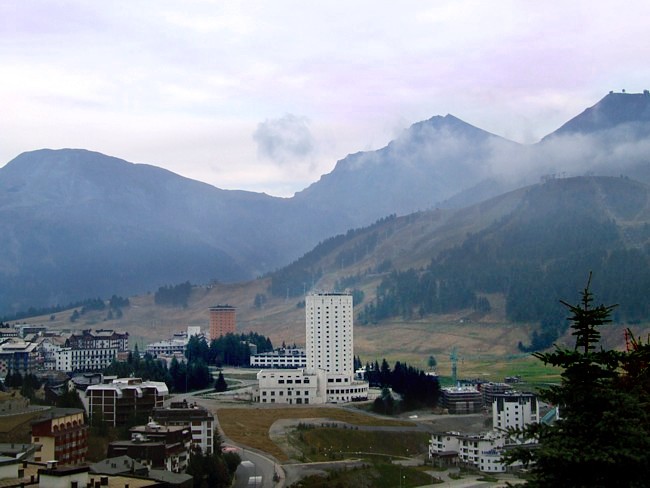Flying with The JoHansens
Personally I think this is my favorite Gliderman ever. In this episode we start where we left off in the last: flying that JoHansen family in Annecy. I get to fly with the young Jonas one of my favorite passengers ever. We say our goodbyes and make ourselves on our way heading south through the Hautes Alpes in what follows: An Italian Paragliding Travel Adventure.
An Italian Paragliding Travel Odyssee
Haute Alpes into Italia
Grenoble, Alpes dHuez, La Grave,
The area is famously unpisted and although patrolled, has no formal avalanche control. The area is dangerous to ski unless supported by a guide, including much glacier travel at the very top.Unsurprisingly, La Grave is a mecca for off-piste and extreme skiers, offering some of the most exciting and challenging lift-served terrain in the world. The vertical drop totals 2,150 metres, although it is possible to ski below the resort to the road and increase the vertical descent to 2,300 metres.Mechanical access to the mountain is limited to a closed, two-stage, pulse gondola system. The first lift starts at 1,450 metres, runs through one intermediate station (known as P1 at 1,800 metres) then terminates at Peyrou d'Amont (2,400 metres). The second stage of the gondola runs directly from Peyrou d'Amont to the Col des Ruillans (3,200 metres). The top of the gondola then allows access to button lift (which is the world's only fully suspended surface lift) to reach the top of the Girose Glacier (3550m). The Girose Glacier can also be reached from the resort of Les Deux Alpes on the other side, although this entails a one to two kilometre walk (between certain hours transport across is provided).
Onwards we make our way through: Serre Chevalier, Montgenevre, Sestriere, through Piedmonte. Badaboom!
Serre Chevalier is a major ski resort in southeastern France, in the Hautes-Alpes department of the Alps. Near the Parc National des Ecrins, it enjoys a large skiing area, with 250 km (155 mi) of slopes and favourable weather, boasting 300 days of sunshine a year. In Serre Chevalier, 80 km (50 mi) of the slopes are covered by snow cannons to supplement natural snowfall. It is owned by Compagnie des Alpes.Serre Chevalier consists of the town of Briançon, with the villages of Chantemerle, Villeneuve, and Le Monêtier-les-Bains.
Sestriere (Occitan: Sestrieras, Piedmontese: Ël Sestrier, French: Sestrières) is an alpine village in Italy, a comune (municipality) of the Province of Turin. It is situated in Val Susa, 17 km (11 mi) from the French border. Its name derives from Latin: ad petram sistrariam, that is at sixty Roman miles from Turin.
Sestriere has around 800 inhabitants and is located on the pass that links Val Chisone and Val Susa, at 2,035 metres (6,677 feet) above mean sea level The village is completely surrounded by mountains, which have been exploited to build one of the biggest ski resorts in Italy. The main mountains around Sestriere are: Monte Fraiteve 2,701 m (8,862 ft) in the north-east, Monte Sises 2,658 m (8,720 ft), Punta Rognosa di Sestriere 3,280 m (10,761 ft) and Monte Motta 2,850 m (9,350 ft) in the south-east. Sestriere is divided into several smaller hamlets: Sestriere Colle, on the pass top, Sestriere Borgata, in Val Chisone, Champlas du Col and Champlas Janvier, in Val Susa.
Sestriere is a popular skiing resort; during the winter holidays the population goes up to about 20,000 people. Together with the villages of Pragelato, Claviere, Sauze d'Oulx, Cesana Torinese and San Sicario, and Montgenèvre in France, it makes up the Via Lattea (Milky Way) skiing area. Sestriere is connected to 146 skiable pistes, for a total of up to 400 km (249 mi) of trails, of which 120 are provided with artificial snow. Sestriere has also one of the few facilities where it is possible to ski at night on a floodlit run.
It regularly hosts FIS Alpine Ski World Cup events, and it hosted the FIS World Championships in 1997, and the IPC World Championships in 2011. It was a main venue during the 2006 Winter Olympic Games and the 2006 Winter Paralympics, hosting all the men's alpine skiing competitions and being the site of one of the three Olympic Villages.[1] The two hotel towers, one of which was part of the Olympic Village, were built in the 1930s by FIAT's founder Giovanni Agnelli, and have become the symbol of the village; these were the first buildings of the village.
Dronero

We camped at the top of the take off at Dronero, where underneath the sunset talking to some locals, we were put in touch with an English speaking Italian middleman, who in turn relayed by phone a rendezvous with an -Italian speaking only- shuttle ride up to the take off of Villar San Constanze, the next morning. Super strong thermal day and we landed right next to the van where we camped the next night. Bingbadaching!
Vicoforte
Onwards onto the Ligurian Coast, after a quick stop in Sanctuario Vicoforte. Wow - Italia.
It originated as a small medieval sanctuary, consisting of a modest shrine containing a fifteenth-century fresco depicting a Madonna and Child. Around 1590 a shooting party passed by and a huntsman accidentally struck the image of the Virgin. According to legend, she began to bleed. The penitent huntsman added his arquebus to the shrine and began to collect the large sum of money which would be needed to repair the damage and expiate his sin. Today the arquebus is preserved in a chapel of the sanctuary near the fresco which it had disfigured.In time the place became a centre of pilgrimage. An early visitor was the duke Charles Emmanuel I of Savoy who, in 1596, commissioned the construction of a large sanctuary from the court architect Ascanio Vitozzi. However the death of both the duke (who had wanted to be buried here), and of the architect, put a stop to the building work.Construction was resumed in the eighteenth century under Francesco Gallo who built the great elliptical cupola which has major and minor diameters of 36 and 25 metres (118 and 82 ft) respectively. It is said that Gallo was required to remove the scaffolding himself, as nobody thought that a structure of this type would be able to stand on its own.The decoration in fresco of the 6,032 square metres (64,930 sq ft) of the cupola’s vault was completed in 1752 by Mattia Bortoloni and Felice Biella, and the sanctuary finally attained its current form in 1884, when the campanili were built along with the three façades.
Cinque Terre

Wow - Italia. And what do you know when we arrive at Cinco terra. We catch that last flyable day of the season on April 29. After the 30th the beach landing which is the only place to go, is closed down because it gets too busy. This is probably one of my top three flights ever. There is no commercial outfitter on site who flies tandems. Even if you show up with a briefcase full of crisp $100 bills, you just can't buy it. Check out the mega tight Landing!!!!
Cinque Terre (Italian pronunciation: [ˈtʃiŋkwe ˈtɛrre]; Ligurian: Çinque Tære, meaning "Five Lands") is a rugged portion of coast on the Italian Riviera. It is in the Liguria region of Italy, to the west of the city of La Spezia, and comprises five villages: Monterosso al Mare, Vernazza, Corniglia, Manarola, and Riomaggiore. The coastline, the five villages, and the surrounding hillsides are all part of the Cinque Terre National Park and is a UNESCO World Heritage Site.
Over the centuries, people have carefully built terraces on the rugged, steep landscape right up to the cliffs that overlook the sea. Part of its charm is the lack of visible corporate development. Paths, trains and boats connect the villages, and cars cannot reach them from the outside. The Cinque Terre area is a very popular tourist destination.
Ligurian Coast

The van never let us down, it cruised us in comfort and style, with dignity along the Ligiurian coast to so many cool quaint towns like San Fruttuoso.
The Abbey of San Fruttuoso is a Catholic abbey in the bay of Camogli. It is also the seat of the parish of the same name of the Vicariate of Recco-Uscio-Camogli, Archdiocese of Genoa.
The abbey is named after St. Fructuosus, a Catalan bishop and saint whose ashes are kept at the abbey.
Carrara Marble
Carrara marble has been used since the time of Ancient Rome.[1] In the 17th and 18th centuries, the marble quarries were monitored by the Cybo and Malaspina families who ruled over Massa and Carrara. The family created the Office of Marble in 1564 to regulate the marble mining industry.[2] The city of Massa, in particular, saw much of its plan redesigned (new roads, plazas, intersections, pavings) in order to make it worthy of an Italian country's capital.[3] Following the extinction of the Cybo-Malaspina family, the state was ruled by the House of Austria and management of the mines rested with them. The Basilica of Massa is built entirely of Carrara marble and the old Ducal Palace of Massa was used to showcase the precious stone.[4]By the end of the 19th century, Carrara had become a cradle of anarchism in Italy, in particular among the quarry workers. According to a New York Times article of 1894, workers in the marble quarries were among the most neglected labourers in Italy. Many of them were ex-convicts or fugitives from justice. The work at the quarries was so tough and arduous that almost any aspirant worker with sufficient muscle and endurance was employed, regardless of their background.[5]The quarry workers and stone carvers had radical beliefs that set them apart from others. Anarchism and general radicalism became part of the heritage of the stone carvers. Many violent revolutionists who had been expelled from Belgium and Switzerland went to Carrara in 1885 and founded the first anarchist group in Italy.[5] In Carrara, the anarchist Galileo Palla remarked, “even the stones are anarchists.”[6] The quarry workers were the main protagonists of the Lunigiana revolt in January 1894.
Lucca

Always in search of free flight it keeps as most of the time off the beaten path we follow paraglidingEarth.com. Sometimes there is some flying, sometimes it's just a town to sightsee.

Our sister city Abetone cheering on as our journey winds through the Tuscan landscapes to the town of Abetone. It's funny how you can go halfway across the world and can make friendships based just alone on your passion and profession of skiing.
Abetone is a comune (municipality) in the Province of Pistoia in the Italian region of Tuscany, located about 80 kilometres (50 mi) northwest of Florence and about 49 kilometres (30 mi) northwest of Pistoia. As of 31 December 2004, it had a population of 699 and an area of 31.2 square kilometres (12.0 sq mi).[1]
As we make our way to Ancona to embark on the ferry with our beloved van, to the exotic lands of Greece. For which adventures lay ahead, you will have to wait for Gliderman 4.



 Sestriere (
Sestriere (
















3 thoughts on “Gliderman III”